Rio de Janeiro for Digital Nomads: firsthand experience and insider tips
From its beautiful cityscape with buildings against a backdrop of mountains and ocean to its vibrant culture and its world renowned party scene, Rio de Janeiro is a delight for tourists from all over the world. How is it like to live here, though? If you’re a remote worker thinking of spending some time in Brazil, you might be wondering how is life in Rio de Janeiro for digital nomads.
In my opinion, it’s great. I’ve come to Rio a few times since I started working remotely in 2017, and my latest visit, which was supposed to last 2 months, has been prolonged indefinitely. I’m so happy in this city that I’ve decided to be based here for a while, and it’s one of the best decisions I’ve ever made.

Not that it doesn’t have its drawbacks, of course. I’m sure you’ve heard about some of its challenges, such as safety concerns, and there are far cheaper places to live in Latin America. But as for the violence, it won’t affect you as you might think. As for the living costs, well… this paradise is totally worth it, and if you make money in a stronger currency than Brazilian Real, it shouldn’t be an issue.
There are few other places in the world where you can find such a great mix of nature, fun and culture, and where the city’s own personality can be felt so clearly. It’s very hard not to fall in love with Rio.
In this article, I’ll talk about the reasons why I would recommend Rio de Janeiro ffor digital nomads, discuss some challenges you may encounter while living here and working remotely, and share practical tips from my own experience.
I’m a Brazilian, but I was born and raised up in the country’s Northeast and had never lived in this region before falling head over heels for Rio. I also have many foreign friends who also shared with me some of their insights about the city, so I can give you both insider tips and an outsiders perspective.
Why do I recommend Rio de Janeiro for digital nomads?
Astounding beauty: seriously, this place is too pretty. I’ve come here about 10 times as a tourist, and have been living here for a few months already, and still haven’t gotten used to it. Whenever I see people playing beach football with the Sugarloaf Mountain as their backdrop, the pink sky at sunset in Ipanema, Christ the Redeemer showing up from different places around the city and many lesser-known but mesmerizing places all around, I often feel like crying. It’s just crazy beautiful.

Vibrant atmosphere: Rio has a very rich history, a diverse cultural scene, an exciting nightlife, and hosts many interesting events. There’s a lot of life going on everywhere, and I doubt you’ll ever get bored.
Work-life balance: the city offers a great mix of work and play, and this is probably what I love the most about it. In general, locals tend to value their free time.
An active, outdoor lifestyle: another thing that attracted me here is the number of outdoor activities. Besides lying at the beach, you can find several hikes for all levels within city limits, chill in nice parks, go to street events and practice several outdoor sports. You’ll see lots of people running, cycling, and playing volleyball, football, futevôlei and altinha at the beach, for instance.
Good weather through most of the year: to enjoy all that life outdoors, there’s nothing better than a climate that’s pleasant throughout most of the year. Summer months can get quite hot (over 40 degrees Celsius some days), but that doesn’t last too long. And although there’s also a rainy period, during most of the year you’ll get sunny days, with a temperature varying between 20 and 28 degrees Celsius.
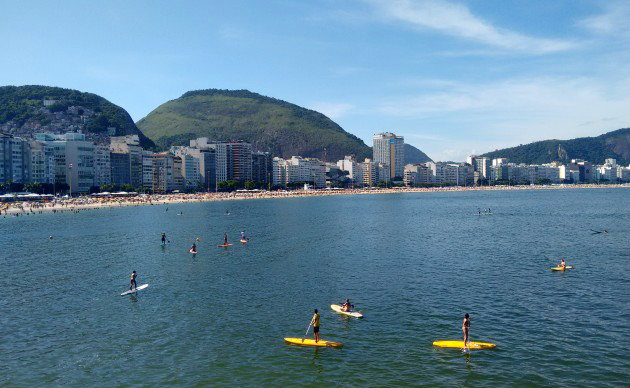
Connectivity and infrastructure: as Brazil’s second biggest city, it’s got a good technological structure, with reliable internet almost everywhere. And since remote work has become increasingly popular (especially since the pandemic), there are more and more options of coworking spaces, coffee shops, and other places with good Wi-Fi – which I’ll talk about below.
Nomads and expats’ scene: although Rio doesn’t have such a strong digital nomad scene as places like Chiang Mai (Thailand), there seems to be an increasing number of remote workers and expats coming here. You’re surely going to find your crew.
Locals receptivity: Brazilian people are usually quite welcoming, and cariocas (people from Rio) are no exception. They might not be so warm as people from the Northeast region, but it shouldn’t be hard to make some local friends, especially if you go partying.
Cost of living: although the living costs in Rio de Janeiro, especially rent, are higher than in other parts of Latin America (and most of Brazil), they’re still much lower than in other famous cities like Paris, NYC or London. If you make money in US Dollars, Euros or other currency that’s stronger than Brazilian Real (BRL or R$), your money will be worth a lot here. If you’re budget-conscious, there are many ways to save money, and plenty of its leisure activities are free of cost. You can also consider doing a work exchange to get free accommodation.
Digital nomad visa: in 2022, the Brazilian government created a visa that allows digital nomads to stay in the country for up to one year, as long as you work for a foreign company, have health insurance and meet a minimum yearly income requirement. If you don’t want to apply for that visa, you can stay for 90 days a tourist if you come from most European and American countries.
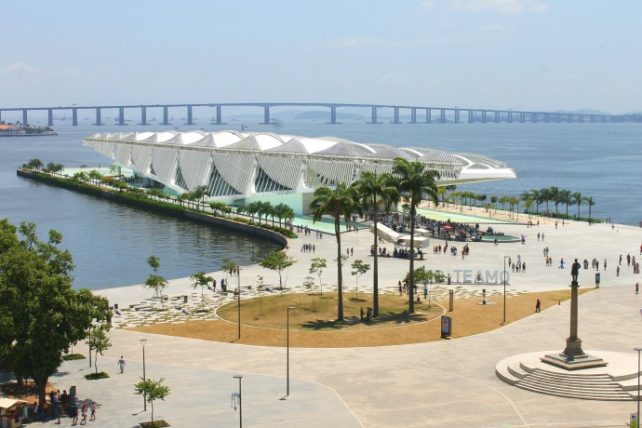
What might be challenging about being a digital nomad in Rio?
Safety concerns: the biggest concern for most foreigners when they think of visiting Rio or moving here for a while is security. Rio is a city of extreme contrasts, and its massive favelas and drug trafficking issues are well known. I honestly don’t think that should stop you from coming, though.
In general, if you’ve already been to big Latin American cities, you won’t feel much difference. If you spend most of your time in the Zona Sul (South Zone, where neighborhoods like Ipanema and Copacabana are located) and busier parts of the Center, it’s unlikely you’ll face any issues. For some advice on safety in Rio, keep reading this article.
FOMO: this is what hit me stronger when I came to spend two months in Rio as a digital nomad: there was just so much to do that it was hard to get work done without feeling FOMO (Fear of Missing Out). If you can stay here for a longer period, or if you’re not working on a very demanding project, it will be great. But if you need to dedicate many hours to your work, all the fun available outside will probably make it challenging.
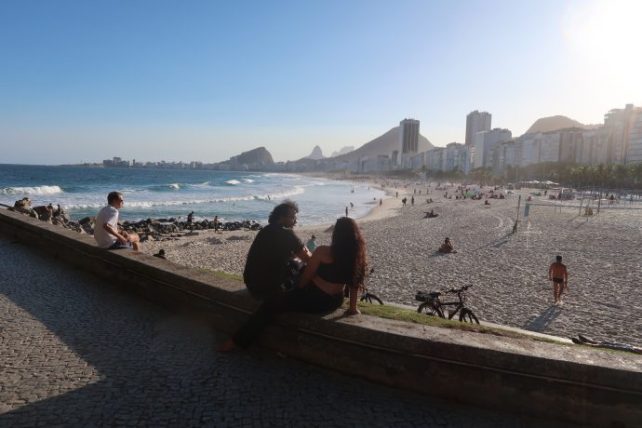
Language: English isn’t widely spoken in Brazil, although Rio is probably the place where you’ll find more people who speak at least a little. If you’re not staying for long, you’ll be able to get by. In touristy neighborhoods like Ipanema, Copacabana and Leblon, you’ll usually find restaurant menus in English and such. If you make friends with high- and middle-class people under 40, you might find many English speakers too. But if you want to spend more time or go beyond the gringo bubble, you’ll need to learn some Portuguese.
I’m a teacher of Brazilian Portuguese as a Foreign Language, so if you’re interested in taking lessons, whether online or in-person in Rio de Janeiro, e-mail me at [email protected] – we can combine lessons with more specific information about Rio de Janeiro for digital nomads.
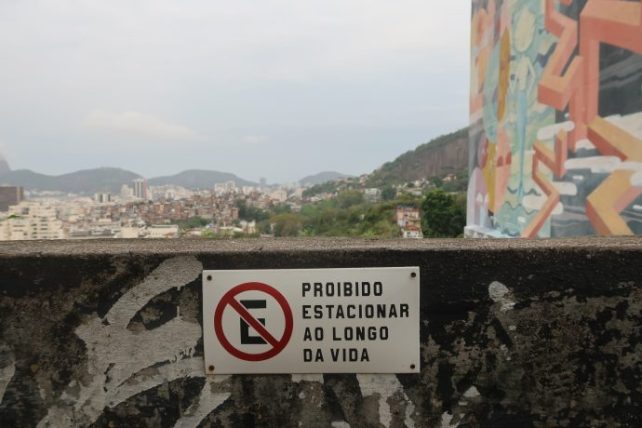
Insider tips: Rio de Janeiro for digital nomads
Now that I’ve covered what I consider to be the major advantages and drawbacks of Rio de Janeiro for digital nomads, I’ll share some tips to help you navigate the city, based on my experience visiting and living here. I’ll talk about where to stay, places to work from, safety tips and more.
Best locations in Rio for digital nomads
When wondering where to stay in Rio, whether as a tourist of for an extended period, the most obvious choice is certainly one of the beach neighborhoods in the so-called South Zone (Zona Sul), like Copacabana, Ipanema and Leblon.
After all, this part of the city is home to the landscapes that populate the imagination of most Brazilians and foreigners when they think about Rio, and it’s one of the safest parts of the city. But there are many other areas which might be good for you too, and I’ll talk about my favorite ones.
Ipanema: if you’re looking for extreme convenience and want to stay somewhere where it’s more likely people will speak English – and if your budget allows it -, Ipanema sure is a great choice. The neighborhood is pleasant and hosts many nice shops, restaurants and bars, apart from the lovely beach. Staying there you can do a lot on foot, even at night, and you won’t have trouble getting to most places across Rio.
The bad side is that you will be in a kind of “gringo bubble”, since it’s the favorite place in Rio de Janeiro for digital nomads and tourists alike. In my opinion, its vibe is quite different from the “real” day-to-day in other parts of the city. Also, Ipanema is an upscale neighborhood, so both accommodation and services tend to be more expensive.
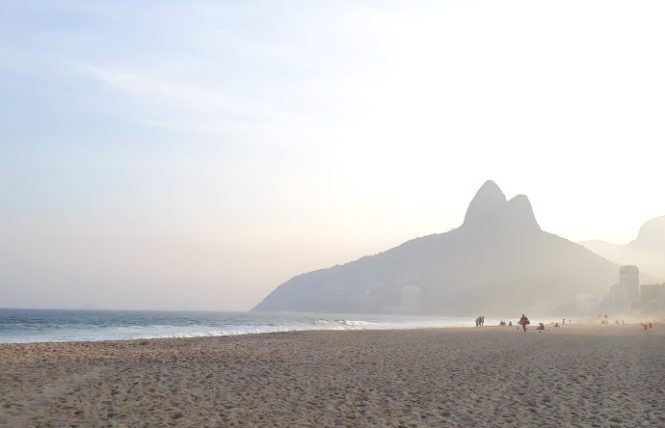
Leblon: right next to in Ipanema is Leblon, the neighborhood with the most expensive square meter in the country. In addition to the beautiful beach, it has good restaurants and bars, shopping malls and a residential atmosphere. It’s a safe neighborhood with lots of things to do day and night, but even more upscale than Ipanema.
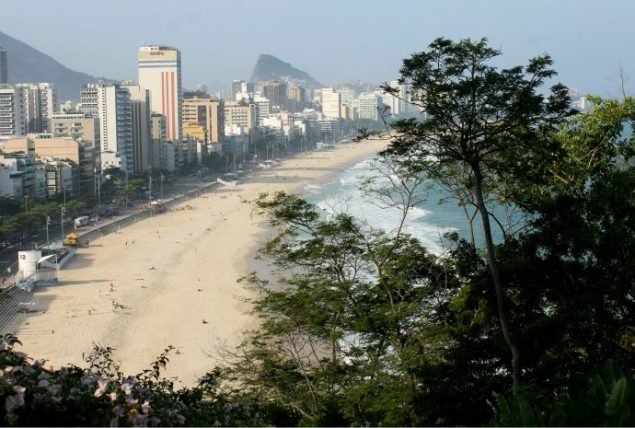
Copacabana: in this iconic beachside neighborhood, prices tend to be lower than in Ipanema and Leblon and you’ll find some very traditional bars and restaurants, as well as shops, supermarkets, etc. It’s not as “fancy” as the aforementioned neighborhoods and has a relatively high population density, but it’s a nice area.
Botafogo: this neighborhood is sort of a hidden gem. It’s also in the Zona Sul, close to Copacabana and Ipanema, but has a much less touristy atmosphere and lower prices. It’s a bohemian neighborhood, and on weekends some of its sidewalks are crowded with young people.
Flamengo: another residential and well-located neighborhood, Flamengo is one of my favorites. There you’ll find Aterro do Flamengo, a large outdoor leisure area, in addition to restaurants with reasonable prices and subway stations. If you live there, you’ll be between the city center and the most famous beaches. Catete neighborhood, which is right next to Flamengo, is also a good choice – a bit more chaotic, but cheaper.

Lapa: known for its nightclubs, the imposing Carioca Aqueduct (Arcos da Lapa) and the colorful Selarón Stairs, Lapa is a very bohemian neighborhood. As such, it tends to get very busy at night, making it a good option for those who are eager to enjoy the nightlife in Rio (and don’t mind some noise, depending on the location of the chosen flat). On the other hand, some streets are not so safe, so you should pay attention to guest reviews and try to choose accommodation near the busier areas.
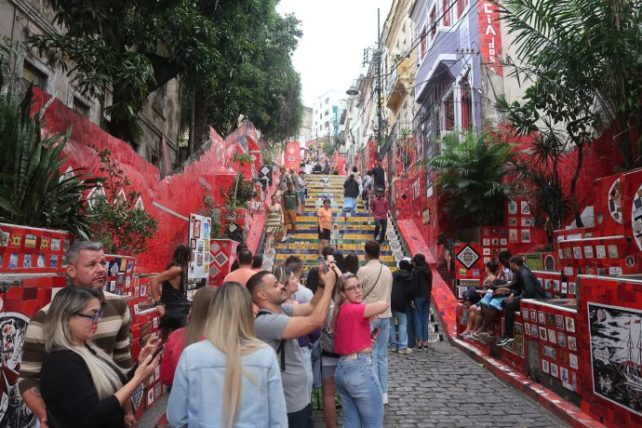
Santa Teresa: one of the loveliest parts of Rio, Santa Teresa is located on a hill next to Lapa. This neighborhood has well-preserved historic architecture and a much quieter atmosphere than most of the city. There you will find very charming lodgings, beautiful views, good restaurants, and lively bars. Unfortunately, it’s not very easy to go from there to other parts of the city. There are few buses, and some cab drivers or Uber drivers don’t like going up the hills.
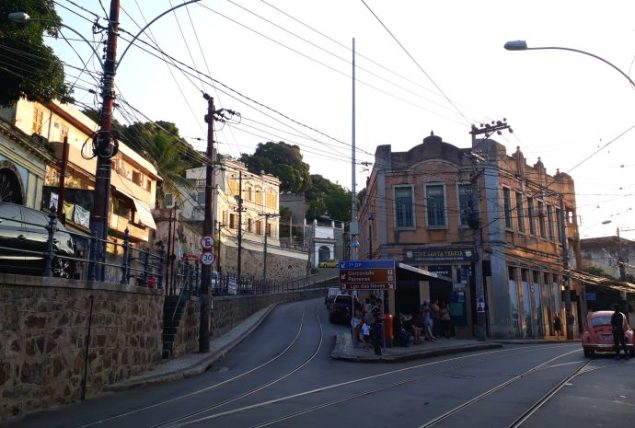
Extra tip: between Flamengo and Lapa you’ll find a small neighborhood called Glória. That’s where I live, and I love it! It’s not so well known, but to me it’s the perfect balance between a residential vibe and a bohemian atmosphere, with lower prices than Flamengo and safer than Lapa.
If you want more information about these and other good areas to stay in Rio depending on your priorities, or want to know specific hotels and hostels that I’d recommend, check out my article about Where to stay in Rio de Janeiro.
If you’re looking for coliving spaces in Rio, I believe there aren’t many yet, but I’ve found Coworksurf, in Recreio dos Bandeirantes (which is very far from Zona Sul, but might be a good option for those who love surfing and want to escape the chaos of big city life). And if you’re staying longer, chances are you’ll meet other remote workers while you’re here and might be able to share a flat.
Cost of living in Rio de Janeiro
Rio is one of the most expensive cities in Brazil. Nevertheless, prices are still much lower than in big cities in the USA or Western Europe. If you’re on a budget and don’t mind staying in a shared flat or a studio outside the most hyped areas, around 1.000 USD would be enough to have a good time in the city. If you want to splurge a bit, then think of something around 1.500 USD.
If you get a whole place for yourself on Airbnb in Copacabana for one month, you can expect to pay about 800 USD, but a room in a shared flat would cost you about 450 USD (beware that prices will be much higher during Carnival and New Year’s Eve). A whole place in Flamengo could cost around 600 USD, and if you’re renting a room in neighboring areas such as Catete or Gloria you could find something nice for around 350 USD.
A meal in a nice-but-not-too-fancy restaurant will cost about R$ 50 (10 USD), and if you’re looking for a fancy dinner it would be about R$ 100 (20 USD) or more. Bus tickets cost around R$ 4,20 (a little less than 1 USD), and the subway is currently priced at R$ 6,90 (1,45 USD). Uber fares usually start at around R$ 8 (1,70 USD). And a monthly gym subscription will cost between R$ 180 and R$ 300 (38 USD to 63 USD).
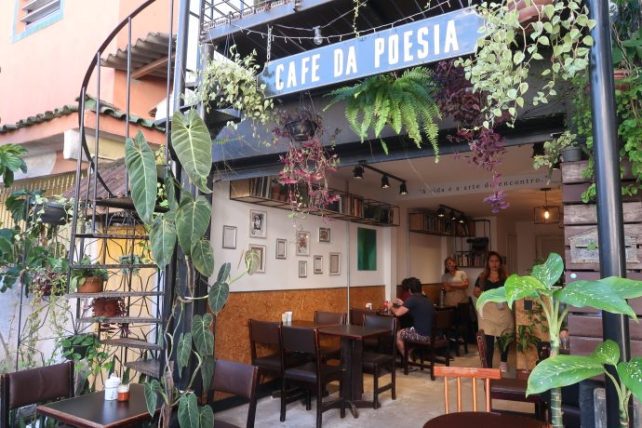
Extra tip: If you’re in a tight budget, a great way to save a LOT of money while living in Rio (and many other destinations around the world) is doing a work exchange. It’s a sort of volunteer program where you work for a few hours every week in exchange for a free place to stay and possibly other benefits, like meals and tours. It can be a good experience for your first weeks here, while you get a feel of the city and look for more long-term accommodation if you wish.
At the Worldpackers work exchange platform, you’ll find some very cool hosts in Rio de Janeiro, and with my discount code JANELASABERTAS you get 10 USD off on the annual plan. Find out more in my article about work exchange.
How to get around the city
If you can, try to stay near a subway station. That way, you’ll easily get to most places in the Zona Sul and Centro (Downtown). The subway system in Rio is a bit limited, but for those areas it’s super useful, and except for peek times, it’s quite comfortable. I made it a priority to stay near a station and it makes my life super convenient.
You can also take buses to most places, and if you download the Moovit app, you’ll get indications about which ones to take and where to get off. However, it’s not the most reliable system, and depending on where you’re going you might spend a lot of time stuck in traffic jams.
If you’re not on a tight budget, you can also take Ubers (there’s even motorcycles available there now). If you’re traveling around Zona Sul and Center, you’ll usually pay up to R$ 30 for a ride (about 6 USD).

The best time to come to Rio
If you’re really looking forward to partying and sunbathing and don’t mind the crowds and high-season prices, you should come from December to March, when it’s summertime and there’s Carnival, which is pretty amazing. I would recommend booking a place to stay in advance, though.
If that’s not the case, come between April and June, when the weather is usually perfect, and you’ll find better prices for accommodation. From September to October (Springtime), it’s also nice, but in the past few years it’s been quite rainy.
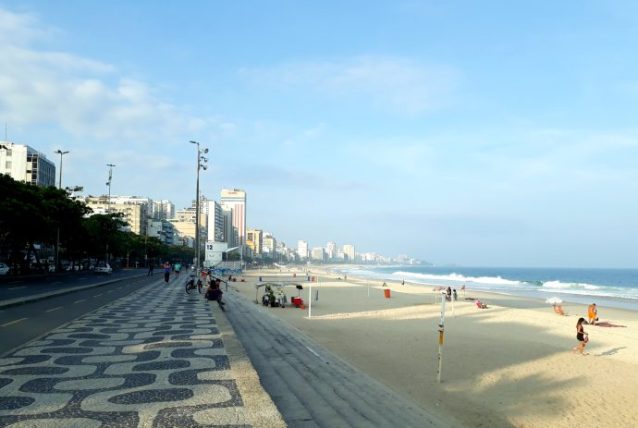
How to stay safe in Rio de Janeiro
If you’re not used to traveling around Latin America and have heard about the violence in Rio, it might be scary to think of visiting or living here as a digital nomad. However, if you stay in the wealthier neighborhoods, ask locals for advice and exercise common sense, you should be perfectly fine.
Rio is supposed to be more dangerous than my hometown (Recife), but I actually feel safer here, because in the areas where I usually go out there’s always a lot of people walking in the streets and sitting in bars.
After spending some time in the city, you’ll probably learn what’s safe or not by watching people’s behaviors, but here’s a few precautions you can take to make sure your stay in Rio goes smoothly:
- Don’t walk around holding your camera or phone, unless you’re with a local and they tell you that area is safe.
- At night, it’s ok to walk around the busier streets of the neighborhoods I mentioned on the section about where to stay, but if that’s not the case, it’s usually better to take an Uber.
- If you’re unsure about going somewhere alone, ask locals if they think it’s safe.
- Always watch your stuff at the beach, especially in busier days.
- Take extra caution if you go partying in Lapa, especially if you plan on getting drunk. That’s the area where most foreigners have trouble.
- Don’t go into favelas unless you’re with someone who knows the place very well.
- If you’re here during Carnival, be extra aware during the parties, when there are big crowds and pickpocketing gets super easy. If possible, leave your phone and credit cards at home, or wear a money belt.
- When you’re carrying your laptop and other valuables, keep them in a bag close to your body and, for extra caution, avoid taking buses.
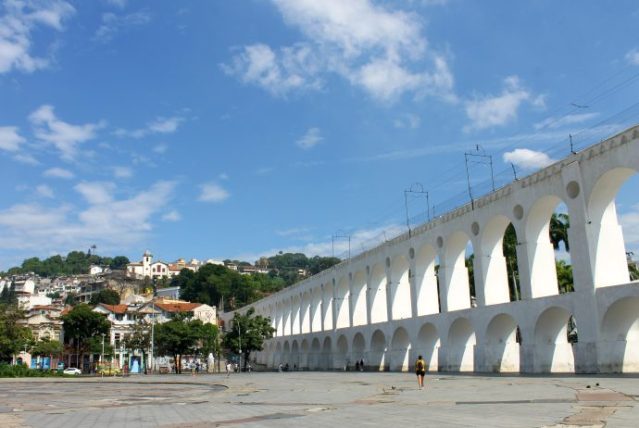
Health concerns
Another advice to make sure your time in Rio only leaves good memories is to take care of your health. Brazil has a universal health system, where even foreigners can be admitted for free, but service in public hospitals isn’t so good.
It’s highly advisable to get an insurance, so if you get sick or have an accident you can go to private hospitals, which are usually quite good. If you’re a digital nomad, one of the best options is hiring SafetyWing’s Nomad Insurance, a travel medical insurance designer for people who never know where they’ll be living next month.
You can hire it even if you have already started your trip and you don’t need to inform your itinerary in advance, in addition to having the flexibility to pause coverage and resume it later.
With this insurance you are covered in 185 countries, and the cost-benefit is great. Check out more information on the SafetyWing website.

Coworking spaces and coffee shops to work from
Although there’s no shortage of bakeries and coffee places with good coffee and nice food all around Rio, I wish it was easier to find places with comfortable seats and good Wi-Fi. There are a few ones that should suffice, though. I’ll list below my favorite coffee shops for working and the best-rated coworking spaces in the city.
Coffee shops for remote work
- Livraria da Travessa
- CoLab Botafogo
- Dark Coffee
- Aussie Coffee
- Com.Café
- Work Café Santander
- Starbucks
Coworking spaces in Rio
- Regus
- WeWork
- Delta BC
- Spaces
- EmWork
- Selina Lapa CoWork
- Coworking Town
Extra tip: my favorite place for remote work in Rio is neither a coffee shop, or a coworking space. It’s the BilioMaison library, located at the French Consulate, in the city center. Entrance is free, Wi-Fi is great and there’s AC, plenty of comfortable seats, many plugs and you get an amazing view of the Sugarloaf. The only downside is that its opening hours aren’t so great.
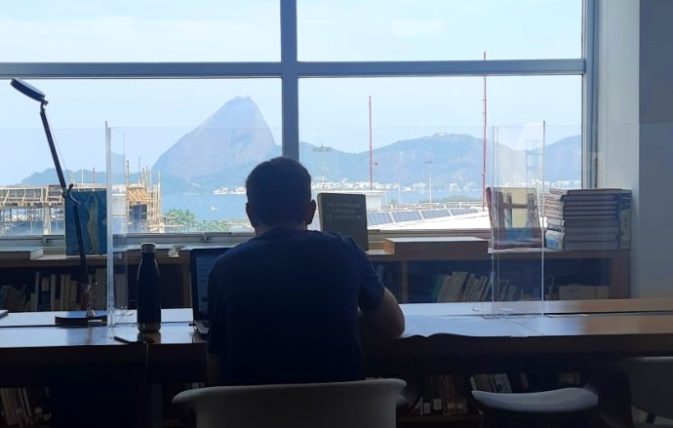

I hope you liked this guide of Rio de Janeiro for digital nomads! If you’re going forward with your plan of living and working remotely in this vibrant city and need some advice, Portuguese lessons or other kinds of help, send me an e-mail at [email protected].
The SafetyWing and Booking links in the article are part of affiliate programs, which means I receive a small commission for every sale made through them and you pay nothing extra for it. I only recommend products and services that I believe in.

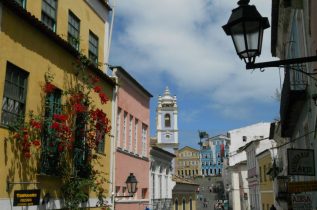














0 Comentários